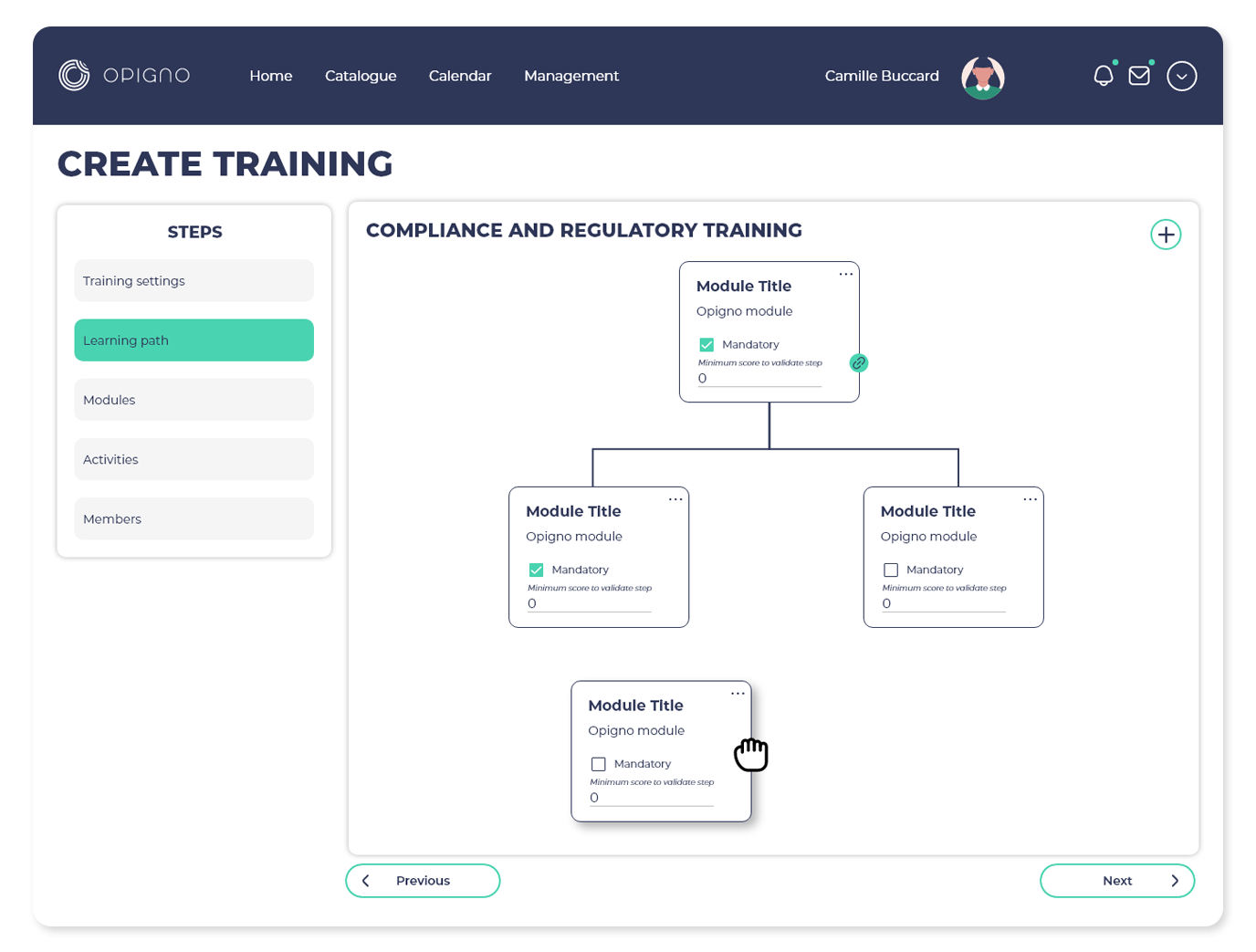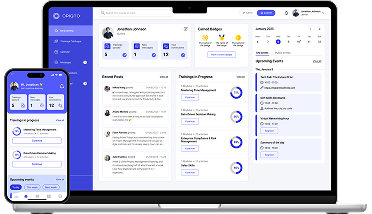One major challenge of delivering online training is that every learner has a different level of knowledge and expertise. Developing a training that feels personalized and engaging to each individual while still being broad enough to handle every learning going through it is tough.
Enter adaptive learning paths, which apply a set of rules and conditions to each module in order to guide users through the material more effectively.
With adaptive learning, more experienced users can skip content they’ve already mastered, users in different roles can be served only relevant modules, and users who need more practice in a certain area can go through additional modules to develop their skills.
Opigno’s learning path tool makes it easy to create adaptive learning paths and deliver trainings as unique as your learners.
Why use adaptive learning paths?
Let’s say you want to deliver a security training to the entire organization, but a few modules have department-specific examples. Rather than creating separate trainings for each department, you can use adaptive learning paths to route learners through the training based on their role.
Adaptive learning paths can also be used to make your trainings more effective for users with a range of experience levels. This makes online learning more engaging, because learners who need more help get it, while those who already know the material don’t have to sit through basics.
For example, if you’re developing a product training for your sales team, the first module might be a knowledge assessment about your company’s overall product lines. Depending on a user’s performance on that assessment, they may be routed to later modules that dig deeper into specific detail of product lines they’re not as familiar with.
That way, you’re not wasting your sales team’s valuable time going over material they already know.
Intelligence is the ability to adapt to change.
Stephen Hawking
Using Opigno’s learning path tool

Creating adaptive learning paths in Opigno is simple. Our learning path tool features a graphical interface that lets you design adaptive learning paths in new trainings, or while editing existing trainings.
Simply set the first module, then define conditions for the next step.
Those conditions could be:
- Score — set a minimum score a user needs to reach before moving on to the next step
- Answers — route users to different modules based on their answer to a specific question within the previous module
- User profile — set conditions based on the user’s position or department within the company
Once you’ve set things up, the learning path will be automatically adapted for all users.
You can also use the learning path tool to schedule live meetings or instructor-led trainings from within Opigno. Some students learn better in person, and some concepts are easier to explain one-on-one, which makes blending live and online training an extremely useful part of your adaptive learning pathway.
Learn more about how it works in our documentation.
